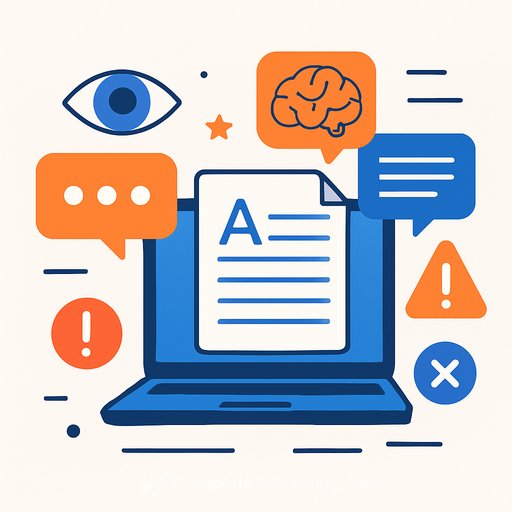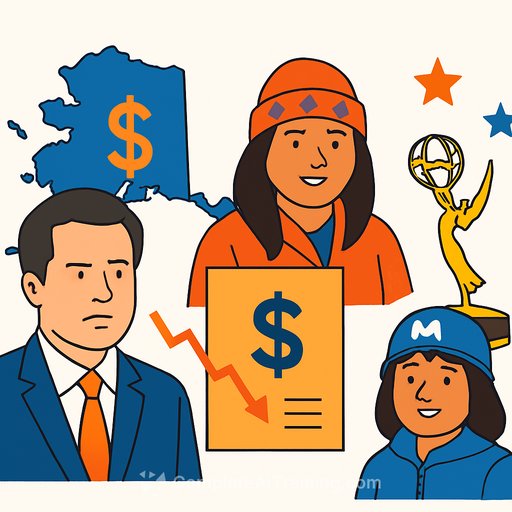AI, Slop, and the Squeeze on Auto Journalism: What Writers Need to Do Now
Auto media is getting flooded with cheap, low-context content built to please algorithms and ad ops. Some of it is AI-generated. Some of it is human, but assembled like AI: fast, unsourced, and disposable.
The result: misinformation, PR backlash, ad inventory glut, and shrinking rates for people who actually report, test, and write with intent. If you make your living with words, this affects your income and your reputation.
What just happened: a major brand openly embraced AI
MotorTrend's editor-in-chief publicly confirmed AI is now part of their production stack. He outlined AI use for article text "assistance," video clipping (OpusClip), Apple News summaries, thumbnails, episode descriptions, and audio cleanup. An editor's note stated the article itself was AI-assisted.
This coincides with their parent company, Hearst Magazines, striking a licensing deal with OpenAI. The pitch is speed, efficiency, and experimentation. The subtext is scale: more content, cheaper.
He has also said, "They don't care who generated the illustration… I think eventually, writing is going to get that way. [Readers] just want a cool story told, they don't really care how." That stance may work for some formats. It's a problem for reported work that relies on trust.
The slop problem: how it hurts working writers
- Misinformation burns relationships. PR teams now spend time correcting sloppy posts. That blowback hits freelancers and editors who play it straight.
- Ad glut crushes rates. Flooded feeds mean lower RPMs and pressure to chase volume. Quality takes longer; volume always wins in bad systems.
- Algorithm-bait dilutes credibility. Unsourced "ownership stories," generic commerce posts, and AI-styled listicles crowd out work with actual reporting and testing.
- Readers can't tell what to trust. If they can't tell what's human or verified, they disengage, or they default to the biggest brand-either way, the independent writer loses.
What pros can do right now
- Set your AI line and publish it. Spell out where you do and don't use AI. Put it in your pitch emails and your portfolio. Transparency is a moat.
- Offer verifiable sourcing by default. Link primary docs, include interview names, add testing methodology. Act like your draft will be audited.
- Pitch outcomes, not word count. Propose specific tests, data pulls, expert interviews, teardown photos, or side-by-sides the slop mills can't fake.
- Add "misinfo insurance." Include a correction protocol in your pitch: who you'll contact, what you'll post, how fast you'll fix. Editors notice.
- Price for verification. Quote a research and fact-check line item. If a client won't pay for accuracy, that's a red flag.
- Keep receipts. Save notes, audio, photos, screen recordings, and timestamps. It protects you and speeds up edits.
- Use AI where it's safe. Summaries of your notes, idea expansion, checklists, and audio cleanup are fine. Do not outsource claims, quotes, or expertise.
- Write human tells into your copy. Firsthand detail, measured nuance, and concrete sourcing are hard for generic AI to mimic.
- Build direct channels. Newsletter, SMS, and communities hedge against algorithm shifts and content farms.
- Audit your bylines. If a publication mixes quality journalism with unlabeled AI or slop, reconsider that brand on your portfolio.
A lightweight AI policy you can adopt (and send with pitches)
- Permitted: ideation, outline variants, grammar checks, style passes, metadata, clip selects, audio denoise.
- Prohibited: unsourced claims, quote fabrication, automated reporting, fake bylines, stealth AI drafts.
- Disclosure: if any AI touched the piece beyond grammar, note it plainly in the footer.
- Sourcing: human-verified primary sources and named experts; all facts traceable to links, docs, or data.
- Privacy: no uploading sensitive notes, embargoed materials, or proprietary data to third-party tools.
Editor-side guardrails to propose (they'll thank you)
- Separate revenue and editorial logins; no publishing rights on the revenue side.
- Contributor onboarding that verifies identity and samples for AI/low-effort patterns.
- Fact-check checklist on every story: sources, quotes, dates, model years, specs, and links.
- AI-use declaration on each assignment; label outputs in the CMS.
- Clear correction SLA and a visible changelog on posts.
- Routine feed audits for thin, unsourced, or duplicate content.
Pitches that cut through algorithm trash
- Teardown + test: "We bought X tires and measured braking, noise, and wear vs. Costco fitment policy."
- Expert reconstruction: "How Chapman's backbone chassis actually worked-photos, drawings, and engineer commentary."
- Data-first: "We analyzed 10,000 used listings to find the real depreciation cliff by trim and powertrain."
- Ownership truth: "A year of charging logs and cost receipts for three EVs across different climates."
How to talk to PR like a pro
- State your testing plan and what constitutes a fair result before you receive a car or product.
- Confirm specs, MSRP, and software versions in writing. Ask for tech sheets, not just press notes.
- Share timelines and your correction process. Make it easy for them to trust you-even when coverage isn't glowing.
The bottom line
Slop scales; trust doesn't. As big brands normalize AI across production, the only durable advantage is reported, verifiable, human work-paired with clear policy and clean process.
Set your standards in public, pitch value that can't be faked, and charge for the labor that keeps your byline credible.
Helpful resources for staying sharp with AI (without losing the plot)
- AI tools for copywriting: what to use for support, not substitution
- Prompt techniques that improve outlines and checklists
Your membership also unlocks:






